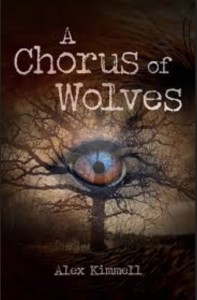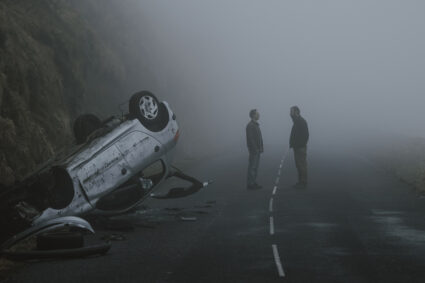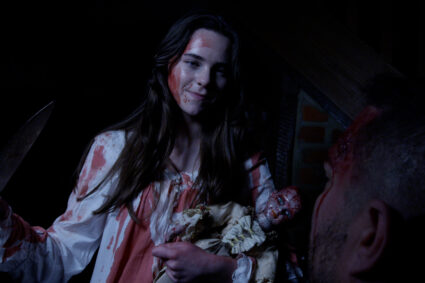
The description for Alex Kimmell’s anthology, A Chorus of Wolves, describes it as a book where “Safe havens become unsafe…the familiar turns outlandish and incomprehensible,” and that’s as good a description as any for what’s in store for you within these pages.
The book includes six short stories and the opening chapters of a novel, “Down the Sunday Hole.” One tale—the eponymous “A Chorus of Wolves”—is broken into several sections, weaving together a tale that spans each phase of the moon. The other stories are shorter, with some like “Josephine” and “The Loneliness of Left Field” lasting just long enough to whet your appetite. The novel excerpt takes up most of the anthology’s latter half.
Kimmell’s strength as an author rests in the atmospheric language and imagery he uses. Each sentence is packed with poetry, every word contributing to the impressionistic whole. It’s a distinctive style; if you give yourself time to acclimate to its rhythm, it will sweep you away. If you lose patience with any hint of purple in your prose, it’s probably best to find a different book.
Although the book is billed as a horror, I’m not sure I’d classify it that way. I’m not sure there is a genre that describes this type of book, which dwells somewhere between supernatural, fantasy, horror and literary. If pressed, I suppose I would have to call it a horror story, but it’s much less “terrifying” and much more “weird.”
To be sure, horrific things occur—a loyal dog wages battle against a faceless menace, a man loses himself to a succubus at the local watering hole—but they unfold in a dreamy, surreal manner. The stories are impressionistic and vague, drawn with broad watercolor strokes rather than clean lines. Endings are, more often than not, left open to interpretation, and threats stay as hazy and undefined as the monsters your imagination conjures from shadows.
The end effect is charming, entrancing and occasionally maddening. Several times I felt that stories ended prematurely—especially “A Chorus of Wolves,” which builds up to a powerful crescendo and then goes away with a whimper just when things are starting to get extremely interesting. More often than not, the take-away from the stories leans more toward “What the fuck just happened?” than any bone-chilling terror or haunting imagery.
Some of the storylines also felt a little familiar. “Kodi” feels in places like a canine retooling of Neil Gaiman’s “The Price,” and “The Girl Who Fell Through” is a pretty standard anthropomorphic Death story whose twist is too subtle to make the tale stand out from others in the genre. Other stories feel a bit fresher, especially “Josephine,” which is one of tales where the indeterminate storytelling is actually a clear strength.
So, on the whole: I would recommend this book to readers who prefer quiet, uneasy tales about the supernatural. If you don’t mind (or even prefer) stories that leave themselves open to interpretation, whose sentences are laden with poetic imagery and which favor the supernatural uneasiness to in-your-face scares, you will most likely enjoy this book. If you’re looking for a horror anthology of blood, heart-pounding action or vibrant character-driven storylines, this is not the book for you.
One final note: I read this book on my iPhone, and the formatting was very broken. Headers and page numbers showed up in strange places, line spacing was erratic and bizarre spacing would render titles practically unreadable. I’m not sure whether this is unique to the iPhone or if every ebook version suffers the same formatting problems, but it’s worth mentioning here. Had I not been assigned the book to review, I most likely would have set it down early due to formatting errors alone.















